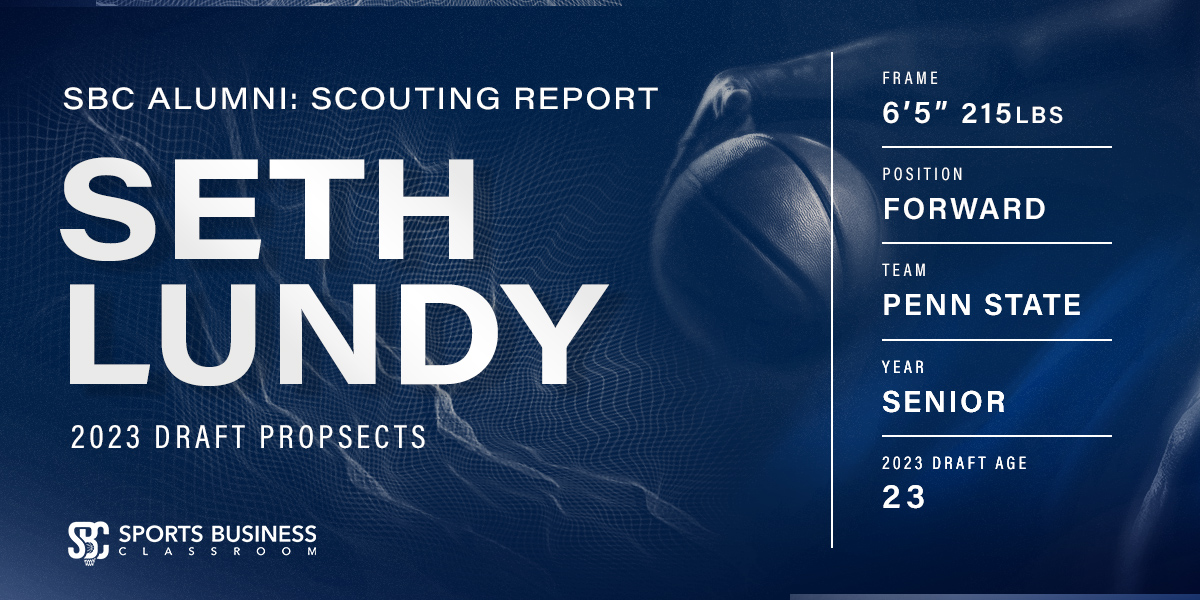
[The following scouting report is part of a series on potential 2023 draft prospects from Sports Business Classroom alumni.]
Seth Lundy
Frame: 6’5″, 215 lbs
Position: Forward
Team: Penn State
2023 Draft Age: 23
Stats via www.sports-reference.com
Offense
Lundy’s appeal comes from his sharpshooting prowess; he possesses a high release and sound shot mechanics that make his attempts challenging to contest. His release is also fairly quick, which lets him get up shots quickly. He can be used as a spot-up shooter or a pick-and-pop threat. He shot 40 percent on 230 attempts this season while being assisted on 82.6 percent of these shots, according to www.barttorvik.com.
Lundy is capable of attacking mismatches and scoring around the rim. He is not opposed to attacking the basket with straight-line drives. However, he is not an above-the-rim finisher, meaning he can struggle against better defenders or similar-sized players. A fair portion of his points around the rim come from his offensive rebounding, where he does a great job using his weight to move defenders away from the ball and giving himself space to grab the ball and go right up with it. This season he shot 59.3 percent on 81 attempts per game while being assisted on 47.9 percent of said shots.
Similarly, Lundy can use his size to get off shots over defenders in the mid-range area. This was primarily seen in conference play, where he can rise over smaller-sized players. It remains to be seen whether this area of his game can translate to the next level, but he was reasonably efficient at 44.6 percent on a small number of attempts at only 56 this past season.
Lundy is a play finisher; his facilitating is nearly non-existent. He can miss open lanes heading to the rim and rarely looks to make an extra pass. His limited vision makes it hard to see him ever being a contributor in this category. He averaged 0.9 assists with a team-low 5.4 assist percentage.
Defense
Defensive rebounding is Lundy’s biggest strength. He uses his size to move bigger players out of the way to come down with contested rebounds. Lundy has a strong motor for chasing down rebounds and out-hustling his opponents—averaging 5.3 defensive rebounds with a 19.2 defensive rebound percentage.
Lundy has had some success as an off-ball defender at the collegiate level. He isn’t quite mobile, but he does a fine job staying with his man when on the weak side. He generally always knows where his man is and can contest a potential shot on a skip pass to them.
On-ball defense is where Lundy struggles, as he doesn’t quite have a position on this end. His poor footspeed and general stiffness make him a liability on the perimeter, as ball handlers have little difficulty getting by him or scoring over him. He isn’t quite big enough to contest actual forwards or bigs, as they can shoot right over him.
Because of his lackluster mobility, Lundy has trouble navigating through real off-ball sets. He can struggle to get through multiple screens at a time, typically resulting in an open shot for the opposing team. Even in simple dribble handoff actions, he can struggle to get around the big, giving the perimeter player an open look from three.
Lunday doesn’t jump passing lanes well to create turnovers for steals. He doesn’t offer any rim protection either, from the weak side or on-ball against other bigs, due to his size and mediocre vertical ability. He averaged 0.8 steals and 0.8 blocks, with a 1.5 steal percentage and 2.0 block percentage.
Looking Ahead
With his shooting prowess and size, Lundy’s role at the next level is clear as a floor-spacing wing, with his rebounding adding value to his profile. However, his lack of defensive impact and position muddies this pathway.
Lundy projects to be a depth piece for an NBA team, with upside as a quality rotation forward if he can make significant strides defensively.


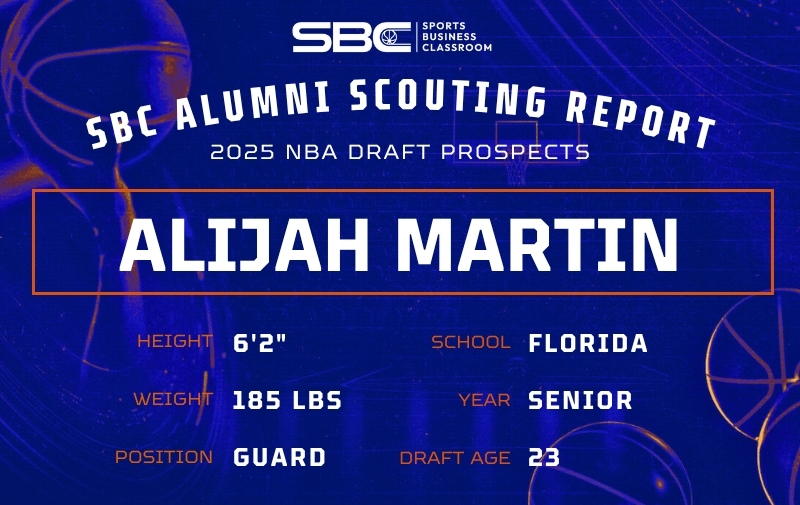
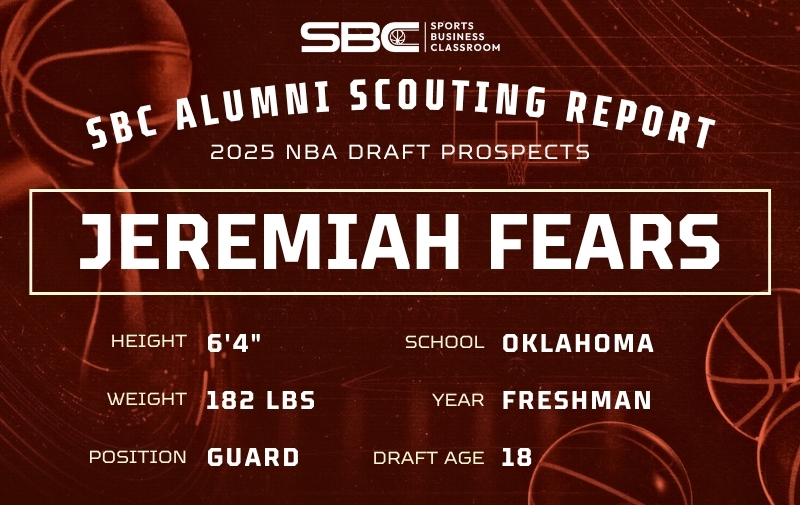
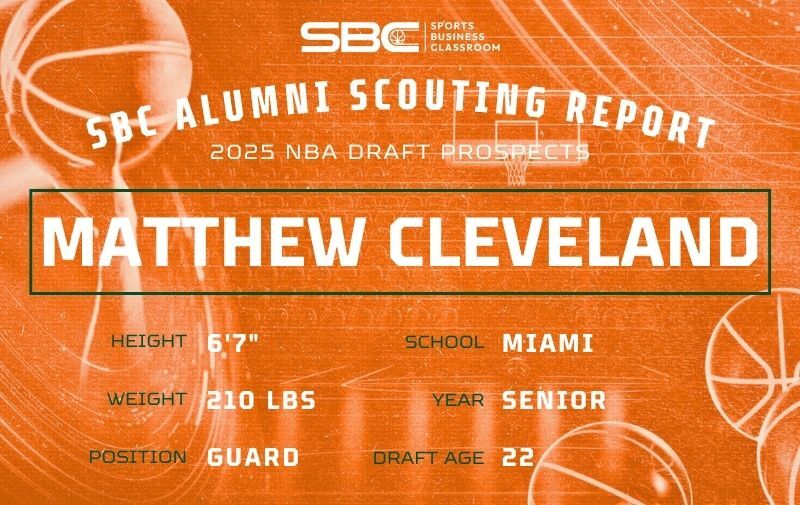
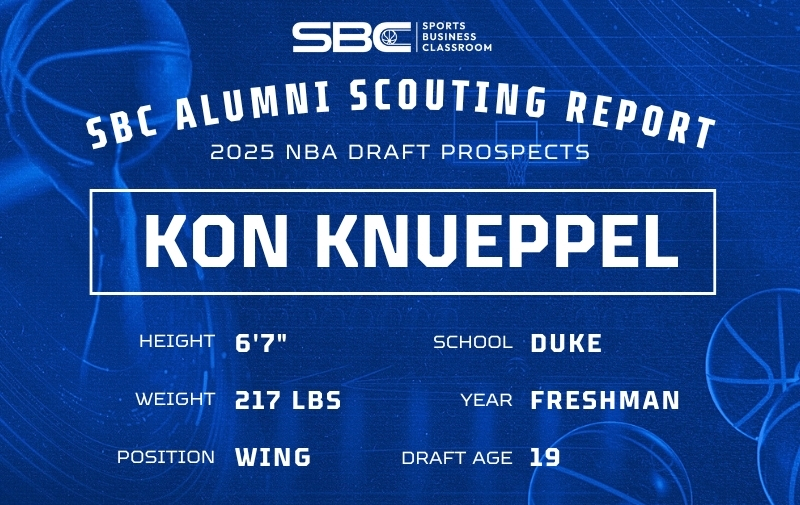
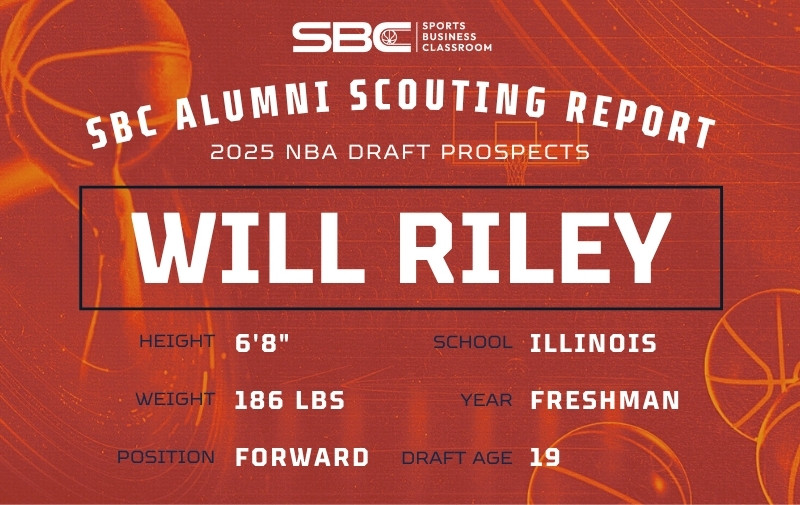
Leave A Comment